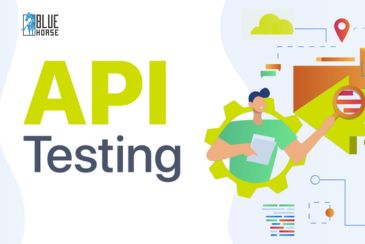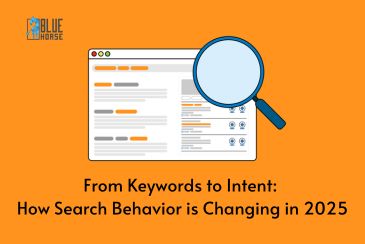LinkedIn Impressions, Unique views, and Article views: An easy explanation
LinkedIn is a very good platform to reach your target audience. We can post a carousel, an infographic, a video, or an article intended for our target audience.
In this article I will be just talking about LinkedIn article impressions, unique views and article read.
- What do they mean
- Whether you were able to resonate with your audience
- The formula to measure your article success
First let’s understand what are LinkedIn article impressions, unique views and article read.
1. Impressions: In simple words the number of times your content appeared on someone’s screen. It is like a banner or advertisement that your target audience or others see on the road, but it doesn’t mean that they stopped to give a glance and read through what the advertisement or the banner was trying to say. So, this metric simply shows the display number.
2. Unique views: This is also referred to as unique impressions and shows the actual number of people reached by your content. This shows that the user had stopped scrolling to see your content. They had given it a glance at least. This number is the count of the exact number of users who had seen your content regardless of how many times they had seen your content. Now let’s go to the first example again, in this case the user had stopped to see the advertisement, but had engaged with it or not you don’t know yet.
3. Article Views: This metric actually tells you that the user engaged with your content. Now they had read it fully or had found it interesting or not, it doesn't tell us that, but it definitely shows that they found it interesting enough to click on in it and read through at least. It somewhat gives you an idea of the level of interest and engagement your articles had been generating. So, going back to the first example, the audience actually stopped to read the advertisement.
So, these metrics are very, very important for understanding the organic reach of your content. At the end of the day in digital marketing aren’t we trying to get the attention of our target audience to sell our services. These metrics tell you what topic is resonating with your audience and how far is your content connecting with their needs, desires, and problems.
When you see that your article reads, views along with likes, reposts, comments are there, you understand that you have succeeded. Impressions are important, but not really that much you see. Surprised ha!
By looking at these three metrics along with likes, repost, comments you can fine tune your content next time and increase its effectiveness and make your audience engagement better.
What is a good number of impressions on LinkedIn?
Comparing Article Performance: Reach, Views, Reads, and Engagement
Let's take a look at two articles I had recently posted on LinkedIn to see how they performed. We'll compare their reach, unique views, reads, and engagement to understand which one was more successful.
Metric Overview:
|
Metric |
Article 1: "10 Product Photography Tips for eCommerce Success!" |
Article 2: "5 Funny Prompts That I Gave to ChatGPT and The Answers it Gave to Me!" |
|
Impressions |
723 |
304 |
|
Unique Views |
315 |
82 |
|
Reads |
47 |
42 |
|
Likes |
3 |
3 |
Reach (Impressions)
- Article 1: Had a reach of 723 impressions, meaning it appeared in the feeds of 723 people.
- Article 2: Had a reach of 304 impressions, so it appeared in fewer feeds.
At first glance, Article 1 seems more successful because it reached more people.
Unique Views
- Article 1: Was viewed by 315 unique users.
- Article 2: Was viewed by 82 unique users.
While Article 1 had more unique views, it's important to consider how this translates to engagement.
Article Reads
- Article 1: Had 47 reads, indicating that 47 people read the entire article.
- Article 2: Had 42 reads.
Although Article 1 had more reads, the difference is small.
Engagement (Likes)
- Article 1: Received 3 likes.
- Article 2: Also received 3 likes.
Likes are a direct indicator of engagement. Both articles received the same number of likes.
Which Article Was More Engaging and Successful?
Engagement is a critical factor in determining the success of a LinkedIn article. While reach, unique views, and reads are important, they don’t necessarily reflect how well the content connected with the audience. Let’s break it down:
1. Engagement Rate: Likes / Views * 100
- Article 1: 3 likes / 315 views = 0.95% engagement rate
- Article 2: 3 likes / 82 views = 3.66% engagement rate
Article 2 has a higher engagement rate, indicating that it resonated more with its viewers.
2. Views Rate = Views / Impressions * 100
- Article 1: 315 views / 723 impressions = 43.6% view rate
- Article 2: 82 views / 304 impressions = 27% view rate
Article 1 has a higher view rate, suggesting it was more compelling to those who saw it.
3. Reads Rate = Reads / Views * 100
- Article 1: 47 reads / 315 views = 14.9% read rate
- Article 2: 42 reads / 82 views = 51.2% read rate
Article 2 has a significantly higher read rate, showing that a larger proportion of viewers engaged deeply with the content.
4. Overall Impact:
- Although Article 1 had a broader reach, it failed to engage its audience as effectively as Article 2.
- Article 2, despite reaching fewer people, managed to engage a higher percentage of its viewers and received direct positive feedback through likes.
When comparing these two articles, Article 2 emerges as more engaging and successful. It had a higher engagement rate, read rate, and overall impact, indicating that its content was more appealing to its audience. The likes it received are a clear sign of its impact and effectiveness.
By analyzing these metrics, you can refine your content strategy to produce articles that not only reach a wide audience but also engage them meaningfully.





















Comments